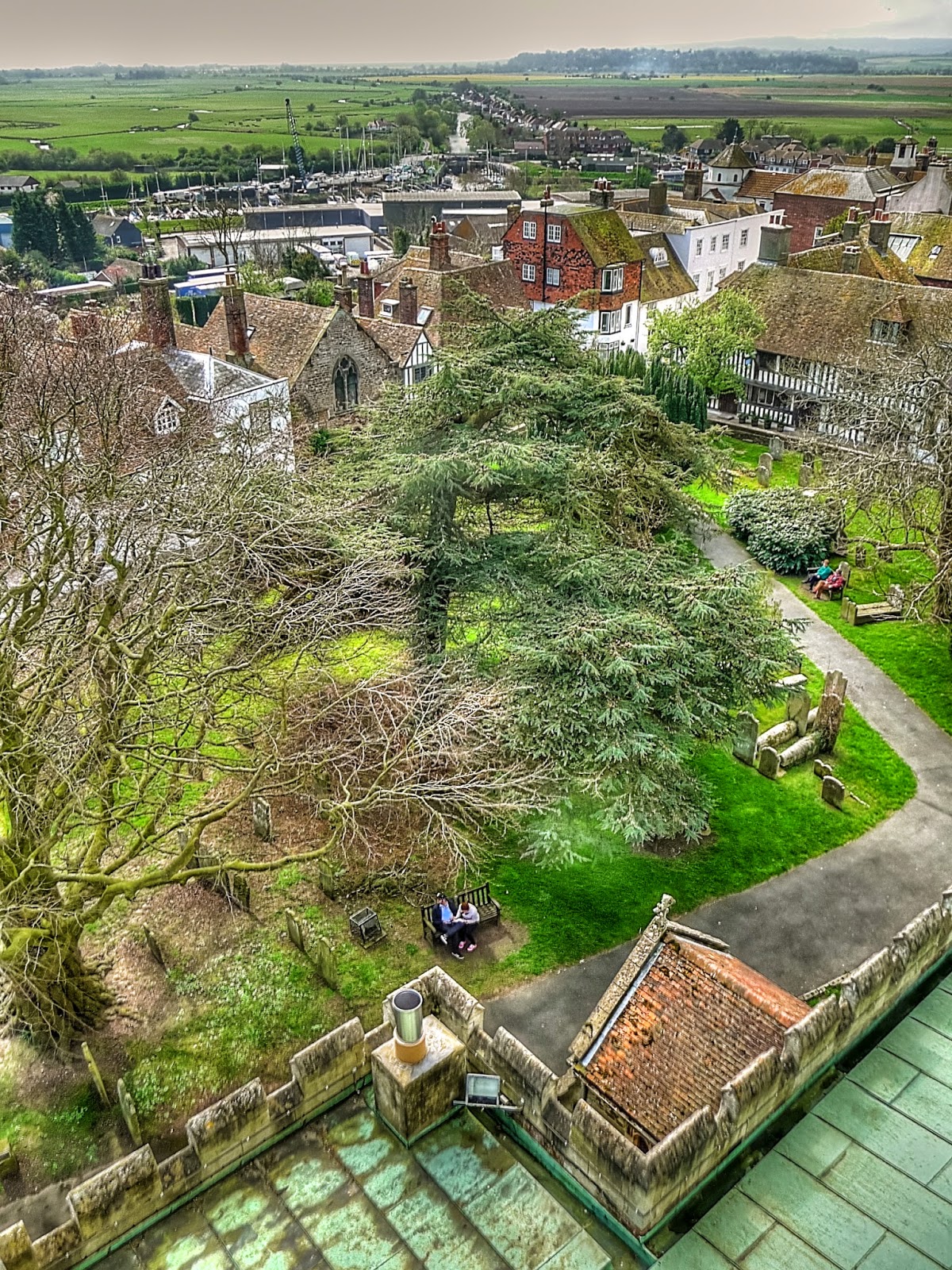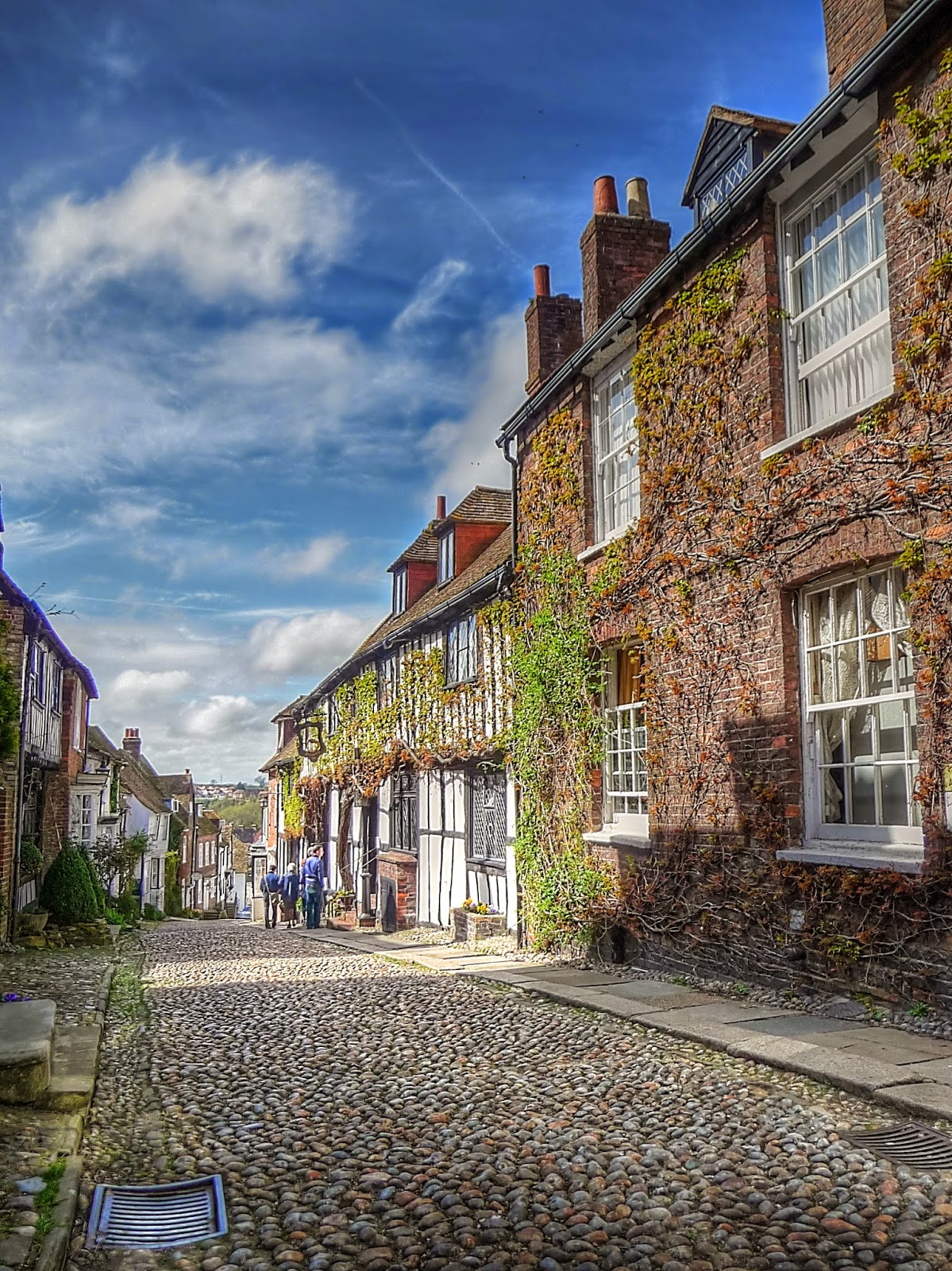Mrs C and I have had a busy weekend catching up with dear friends who we haven't seen since the New Year. Today we enjoyed a delicious lunch at the 'White Bear' public house in Featherbed lane, Chelsham, a quaint Sixteenth Century Inn which has become very popular over the past few years. The last time that I visited many years ago it was frequented by bikers but they appear to have hung up their 'Hogs' and bought sports cars or conservatories as part of their mid-life crises.
Yesterday we met some other great friends in the 'Antient towne' of Rye on the edge of Romney Marsh and close to Camber Sands, again enjoying a lovely pub meal followed a few hours later with afternoon tea in a quaint little Tea Room. I took this opportunity to break out the old Kodak and take a few snapshots of the medieval streets and panoramic views from the tower of St Mary's church.
Rye is a small town that lies approximately two miles from the sea on an escarpment at the confluence of the rivers Brede, Tillingham and Rother. In medieval times however the town was an important sea port set in a wide bay and surrounded by the sea. It is part of the Confederation of Cinque Ports (pronounced 'sink') a series of coastal towns in Kent and East Sussex set up for trade and Military purposes, usually with and against the French.
Unfortunately for the wealth of the town the rivers began to silt up due to Longshore drift and local farmers reclaiming land from the sea on Romney and Wallend marshes. The town was finally cut off from the sea in the 13th Century after several violent storms changed the course of the River Rother and also destroying the town of old Winchelsea, two miles to the west. With the silting up of the rivers and the coming of larger ships with deeper draughts the trade shifted to other ports with deep water harbours.
After Rye's economy began to decline the local enterprising merchants and fisherman switched to smuggling. Initially they smuggled wool which was heavily taxed but by the Seventeenth Century all manor of goods were being smuggled through the town. Eventually luxury goods such as lace, tobacco and brandy were being illegally landed and smuggling became a serious criminal activity. The most notorious of the smuggling groups was the 'Hawkhurst' gang who based themselves in the Mermaid Inn. They landed and stored their illicit contraband in tunnels underneath the Inn and were also responsible for numerous murders for which they were subsequently hanged.
Today, with its historic roots and charm, Rye has become a tourist destination with many fine places to stay, shop and dine. We had a fantastic time exploring the old medieval town and poking around in the many antique shops and are already planning another trip to the town in the near future.










No comments:
Post a Comment